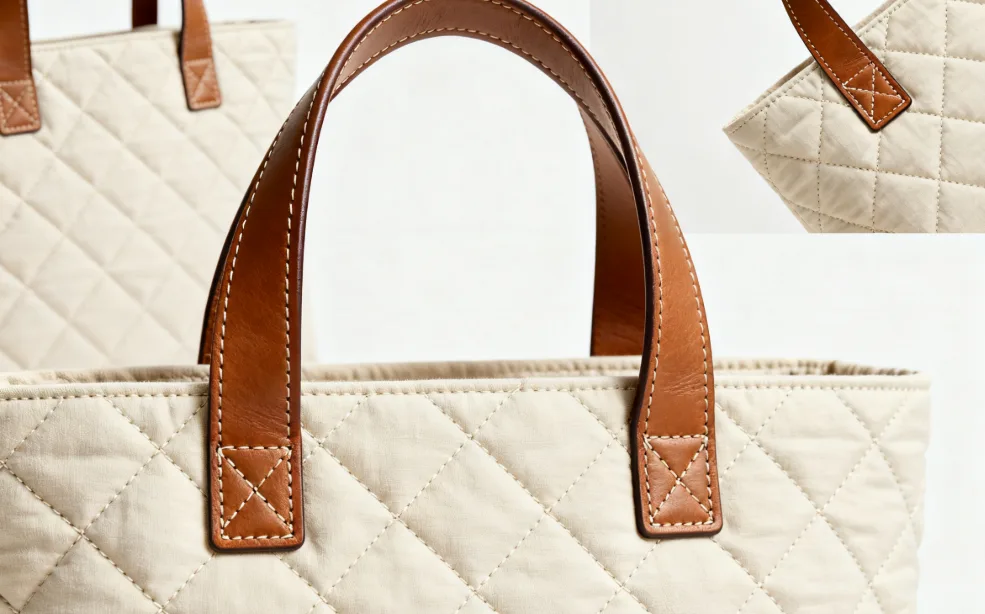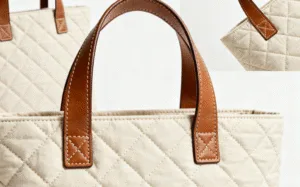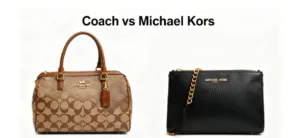In the competitive bag manufacturing industry, a quilted tote bag stands out not only for its elegant appearance but also for the craftsmanship hidden beneath its surface. Behind every neat stitch and soft texture lies a well-engineered tote bag structure that determines its durability, shape, and overall performance.
For brands and distributors, understanding the quilted tote construction is essential. The structure defines how the bag maintains its form, withstands daily use, and reflects product quality. A strong foundation doesn’t just enhance the user experience—it also reduces defect rates and improves long-term brand reputation.
As sustainability and design efficiency become key factors in product development, analyzing the internal structure of a quilted tote bag allows manufacturers to refine materials, optimize production, and deliver a better balance between aesthetics and functionality. This guide will take a closer look at each component, helping businesses evaluate and create tote bags that meet today’s market standards for quality, design, and durability.
Contents
Handles and Reinforcement — Strength and Comfort in Every Carry
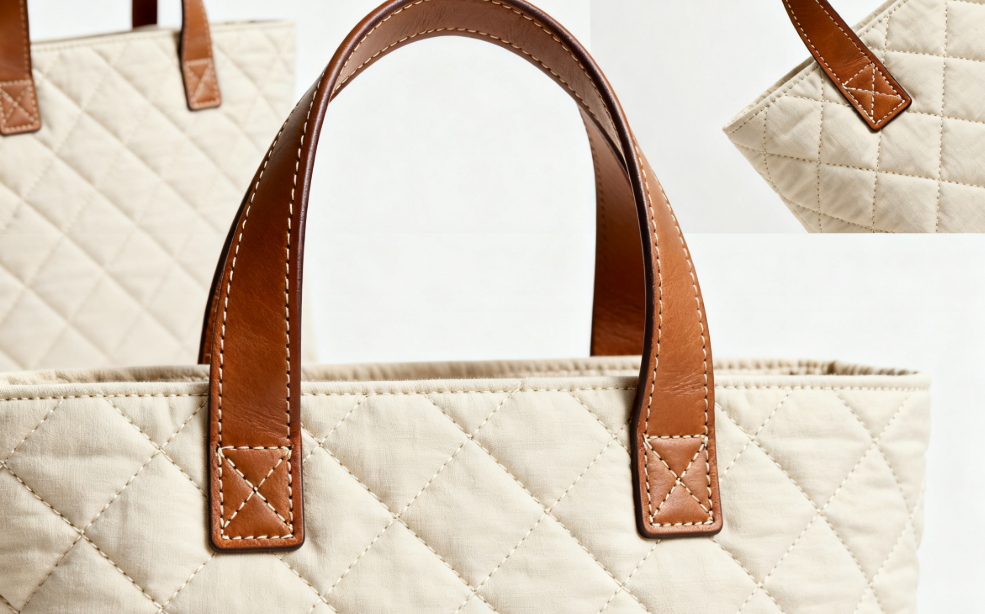
Handles are more than a visual element—they form the backbone of every quilted tote bag. The design directly determines how comfortable the bag feels when carried, how much weight it can support, and how balanced it looks overall. A high-quality handle requires precise coordination of shape, material, and stitching, ensuring both durability and elegance.
1. Ergonomic Design and Adjustability
Handle construction must follow ergonomic principles to provide comfort and flexibility:
-
Length Range: Typically between 45–65 cm, depending on whether the tote is designed for hand carry or shoulder wear.
-
Width: Light daily totes often feature handles 2.5–3.5 cm wide, while structured or travel totes use 4–5 cm handles for better weight distribution.
-
Design Considerations: Curved stitching and padded joints help reduce shoulder strain. During production, CNC cutting and precision sewing technologies ensure consistent dimensions and perfect symmetry.
For instance, a vegan leather quilted tote bag designed for professional use often features double-stitched handles that feel soft to the touch yet maintain a strong, structured profile.
2. Padding and Reinforcement
Comfort and longevity come from careful internal reinforcement:
-
Padding Materials: EVA foam, microfiber filling, or PU sponge provide cushioning during extended use.
-
Outer Layer: Durable vegan leather or nylon webbing offers both abrasion resistance and refined aesthetics.
-
Reinforced Stitching: Stress points such as D-ring joints and bag openings use double stitching or bar-tack reinforcement to prevent tearing.
-
Special Features: Some quilted tote bags include a hidden reinforcement panel or canvas inner strap to enhance strength without adding bulk.
For example, a business-oriented quilted tote handle might feature 1 cm EVA padding wrapped in reinforced PU leather, achieving a clean look with lasting comfort.
3. Handle Material Selection
Choosing the right handle material defines both the tactile feel and brand positioning:
-
Full-Grain Leather: Premium, durable, and elegant—ideal for luxury tote collections.
-
PU Leather or Vegan Leather: A sustainable and flexible option, perfect for brands emphasizing eco-conscious design.
-
Nylon or Polyester Webbing: Lightweight and resilient, commonly used in travel, work, and casual tote bags.
Each material can be customized through dyeing, embossing, or quilting patterns to enhance visual identity and brand consistency.
A well-crafted quilted tote handle strikes the perfect balance between comfort, durability, and sophistication. Through precise material selection, ergonomic shaping, and expert reinforcement, manufacturers can ensure every tote bag delivers effortless carrying comfort and long-lasting performance—whether for daily use, business, or travel.
Padding Layer — The Secret to Softness and Shape
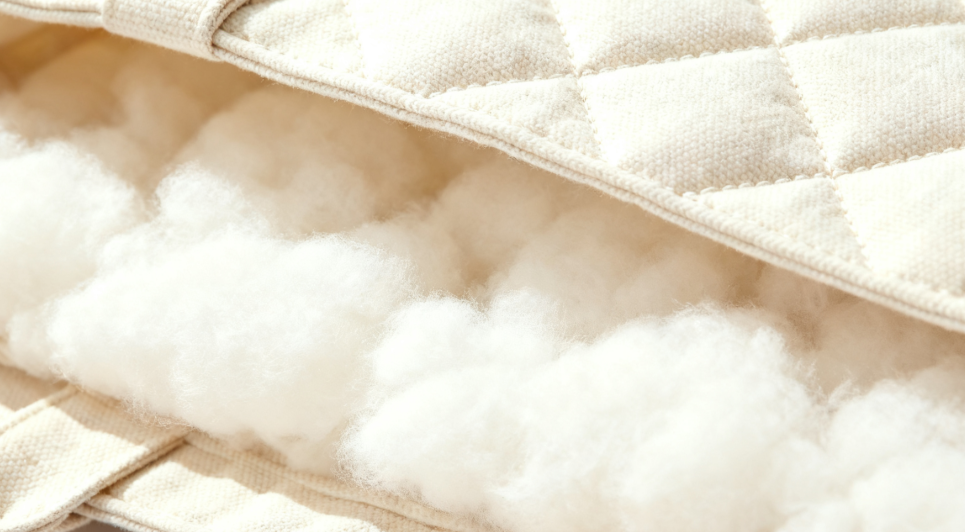
The padding layer is the hidden core of every quilted tote bag, providing structure, cushioning, and a soft hand feel. Situated between the outer fabric and the inner lining, this middle layer determines the bag’s body shape, resilience, and long-term comfort. For manufacturers, mastering the selection and combination of padding materials is crucial to achieving a balance between softness, lightness, and durability.
1. Padding Materials Used in Quilted Tote Bags
Foam (EVA or PU Foam)
Features: Soft, elastic, and lightweight. EVA foam provides excellent shock absorption and resilience, while PU foam offers a smoother texture for luxury collections.
Application: Commonly used in structured padded tote bags to maintain the bag’s silhouette. The typical thickness ranges from 2 mm to 8 mm, depending on the desired firmness.
Factory Process: Foam sheets are cut precisely using CNC cutters and laminated to the outer fabric through hot-pressing or adhesive bonding, ensuring consistent shape retention.
Polyester Wadding (Nonwoven Batting)
Features: Fluffy, breathable, and cost-efficient. Polyester wadding enhances volume without adding weight.
Application: Ideal for soft-style foam-filled totes or quilted fashion bags. Often used in diamond or wave quilting to create a plush, cloud-like surface texture.
Factory Process: Layered between the outer shell and lining, then stitched through computerized quilting machines for uniform density and pattern alignment.
Fiberfill or Microfiber Padding
Features: Ultra-soft and flexible with strong recovery ability. Microfiber padding provides premium cushioning and heat insulation.
Application: Suitable for high-end quilted tote bags or seasonal designs requiring a warmer hand feel. Typical thickness: 3–6 mm.
Factory Process: Secured with interlining to prevent shifting during sewing, ensuring the quilted lines remain neat and even.
2. Structural Role — Balancing Softness and Stability
The padding layer plays a dual role in construction:
it absorbs shocks and maintains the bag’s form. Proper density prevents deformation while allowing a pleasant hand feel.
Manufacturers often combine foam + wadding or EVA + fiberfill to fine-tune the structure—soft enough for comfort, yet firm enough for a professional silhouette.
Technical Data Reference:
-
Soft-style tote (casual): 2–3 mm polyester wadding
-
Structured office tote: 4–6 mm EVA foam
-
Travel tote: 6–8 mm foam laminated with fabric interlining for extra firmness
Factory Tools: CAD modeling ensures even layer distribution, while automatic quilting machines maintain ±0.5 mm precision in stitching depth and alignment.
3. Balancing Weight and Thickness
The art of quilted padding lies in proportion.
Too much filling makes the bag bulky, while too little reduces texture and support. The optimal result combines tactile softness with lightweight performance.
During production, testing equipment such as compression meters and flexibility testers is used to confirm the padding’s durability and resilience. This process ensures every tote bag comfort standard meets both visual and structural expectations.
The padding layer defines the true craftsmanship of a quilted tote bag. Choosing the right combination of foam, wadding, or fiberfill, and applying precise quilting techniques, ensures each tote remains soft to the touch, stable in structure, and comfortable to carry. For professional tote bag manufacturers, it is not just a hidden layer—it is the foundation of lasting quality and refined design.
Stitching & Quilting Technique — The Core Craftsmanship

When it comes to quilted tote bag craftsmanship, the stitching and quilting process is where structure truly comes to life. It not only defines the bag’s aesthetic but also determines its durability, flexibility, and overall quality.
1. Stitching Density and Structural Strength
The density of the stitching—typically measured by stitch length per centimeter—plays a critical role in maintaining the integrity of the quilted layers.
-
High-density stitching (2–3 mm per stitch) ensures that the padding remains evenly distributed, preventing material shifting over time. This is ideal for luxury quilted totes that demand precise construction and a premium hand feel.
-
Medium-density stitching (3–4 mm per stitch) is more common in mass production. It offers a good balance between softness, production efficiency, and strength.
-
Loose stitching (above 4 mm per stitch) may create a puffier texture but can compromise long-term stability, especially in bags frequently exposed to heavy use.
Well-structured stitching helps reinforce stress points—such as the bag’s corners, handle base, and opening seam—ensuring the tote can carry weight without distortion.
2. Quilting Patterns and Their Structural Influence
Beyond aesthetics, the stitching pattern defines how evenly the fabric and padding layers are locked together.
-
Diamond quilting offers classic elegance and excellent load distribution, ideal for both vegan leather and nylon quilted bags.
-
Vertical quilting creates a sleek and elongated appearance, often used in modern or minimalist designs.
-
Wave quilting adds flexibility and softness, enhancing comfort when carried.
-
Box or grid quilting maximizes strength and form stability, preferred in structured business-style totes.
Each pattern has its functional logic—diamond and grid patterns provide the most rigidity, while curved motifs like waves enhance softness and pliability.
3. Machine Quilting vs. Hand Quilting
Most modern tote bag manufacturers use precision machine quilting for consistent stitch tension and alignment. Advanced sewing machines can achieve uniform spacing within ±0.5 mm, allowing bulk production with minimal error.
However, hand quilting—though slower—is still favored in premium collections for its artisanal appeal. Hand-sewn stitches naturally vary slightly in depth and angle, giving each quilted tote a unique texture and human warmth that machines cannot replicate.
4. The Role of Thread and Needle Selection
For vegan leather or nylon quilted totes, polyester core-spun thread (Tex 40–70) is preferred for its high tensile strength and resistance to fraying. In cotton or canvas versions, cotton-wrapped polyester thread provides a softer, more natural look.
Needle size also matters: size 18–20 for heavy materials like leather, and size 14–16 for lighter nylon or cotton.
The quilting stitch is more than just decoration—it’s the architectural skeleton of the quilted tote bag. Proper stitch density, pattern design, and thread selection can enhance both aesthetics and durability, extending the bag’s lifespan while maintaining its signature padded charm. A perfectly quilted structure not only looks refined but feels secure and enduring, representing the true craftsmanship behind every high-quality tote.
Base & Shape Retention — The Hidden Support System
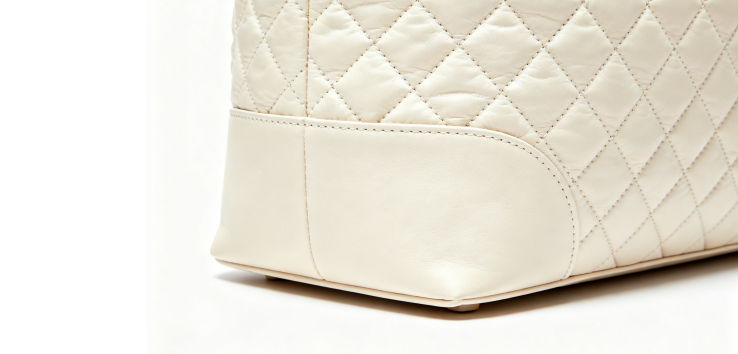
In every structured tote bag, the base plays a silent yet crucial role. It serves as the foundation that maintains the bag’s form, supports its weight, and prevents sagging over time. Whether for professional use, travel, or daily activities, a well-designed base defines how the tote performs under load and how long it retains its elegant silhouette.
1. Reinforced Base Materials
Most high-quality quilted totes include a reinforced bottom panel made from materials such as high-density EVA foam, PP board, or PU leather base plates.
-
EVA foam (2–3 mm) provides flexibility and shock absorption, ideal for soft structured totes.
-
PP board (1.5–2 mm) offers rigidity and durability, ensuring the bag stands upright even when empty.
-
PU or leather base inserts add a refined touch, balancing aesthetics and structure for luxury or business styles.
In factory manufacturing, base materials are often laminated or stitched directly into the lining to achieve a seamless appearance and extra durability.
2. Structural Stitching and Internal Support
Reinforced stitching along the bottom edges—especially the corner seams and side panels—enhances weight distribution and prevents distortion. Some tote bag constructions also integrate inner linings with stiff interlayers to support the vertical shape and reduce base collapse.
Precision stitching tolerance is usually controlled within ±1 mm, ensuring symmetry and alignment for mass-produced totes.
3. Preventing Sagging and Shape Loss
A common challenge for large quilted tote bags is maintaining their structure under heavy load. To solve this, manufacturers often:
-
Add a removable base board for easy cleaning and replacement.
-
Use reinforced edge piping to enhance form stability.
-
Apply quilting reinforcement lines across the bottom for extra tension.
These measures keep the tote upright and elegant, even when filled with laptops, cosmetics, or travel essentials.
4. Tailoring Base Design to Usage
Different bag purposes call for different base constructions:
-
Work totes benefit from a firm, rectangular base to hold documents or devices securely.
-
Travel totes require a thicker bottom layer for extra load capacity.
-
Everyday totes can adopt a flexible, slightly cushioned base for comfort and lightness.
The base of a quilted tote bag may be hidden from view, but it determines how the bag looks and performs. A carefully engineered reinforced base ensures durability, structure retention, and lasting beauty—transforming a simple fabric bag into a dependable, elegant everyday companion.
How Sunteam Approaches Eco-Friendly Design
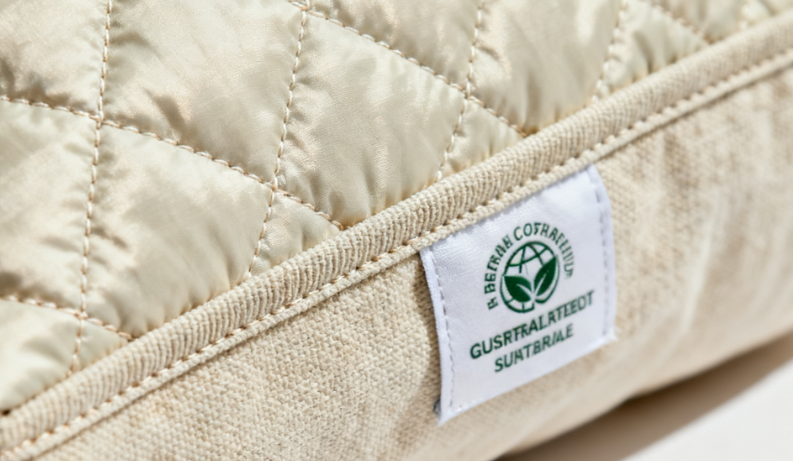
Sunteam integrates sustainability directly into the design of quilted tote bags by using recycled fabrics and low-energy sewing techniques, ensuring durability, comfort, and aesthetic appeal while minimizing environmental impact.
Leveraging AI cutting and automated quilting, Sunteam achieves precise, consistent production with minimal material waste. This approach balances design elegance with eco-friendly and ethical manufacturing, delivering totes that are both stylish and responsible.
Conclusion
Understanding the structure of a quilted tote bag is essential for brands, manufacturers, and distributors seeking high-quality, durable, and visually appealing products. From the outer layer and padded middle to reinforced handles, stitching techniques, and base construction, each element contributes to comfort, longevity, and design precision. By combining careful material selection, ergonomic design, and smart manufacturing—like automated quilting and sustainable practices—businesses can produce structured tote bags that meet modern market demands while reflecting brand value and ethical standards.
FAQ
1. What materials are commonly used in quilted tote bag construction?
Common materials include vegan leather, nylon, cotton canvas, and various padding layers like EVA foam, polyester wadding, or microfiber. Each material affects durability, tactile feel, and bag structure.
2. How does quilting affect the tote bag’s durability?
Proper quilting stitching locks the padding and outer fabric together, maintaining shape and evenly distributing weight. High-density or reinforced stitching extends the bag’s lifespan and prevents deformation.
3. What makes a tote bag structured or stable?
A reinforced base, strategic stitching patterns, and internal support panels help the bag retain its shape under load, preventing sagging while allowing elegant presentation.
4. Can quilted tote bags be eco-friendly?
Yes. Brands like Sunteam use recycled fabrics, low-energy stitching, and smart manufacturing technologies to create sustainable tote bags that balance aesthetics, comfort, and environmental responsibility.
5. What should manufacturers focus on when designing quilted tote bags?
Key factors include material selection, padding thickness, handle reinforcement, stitching density, and pattern design. These ensure comfort, durability, and a professional look suitable for business, travel, or daily use.

